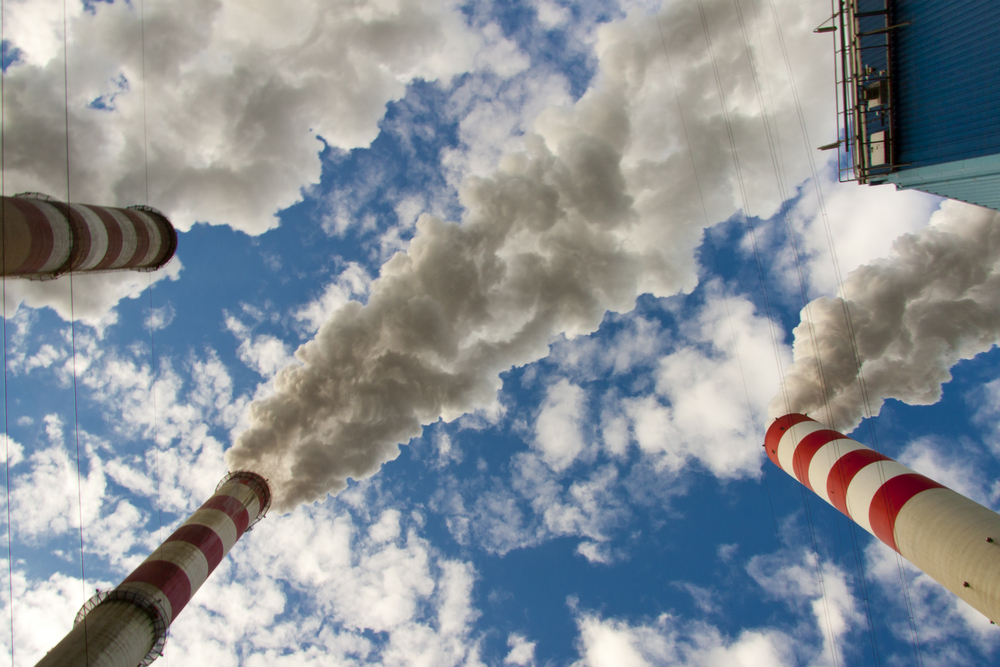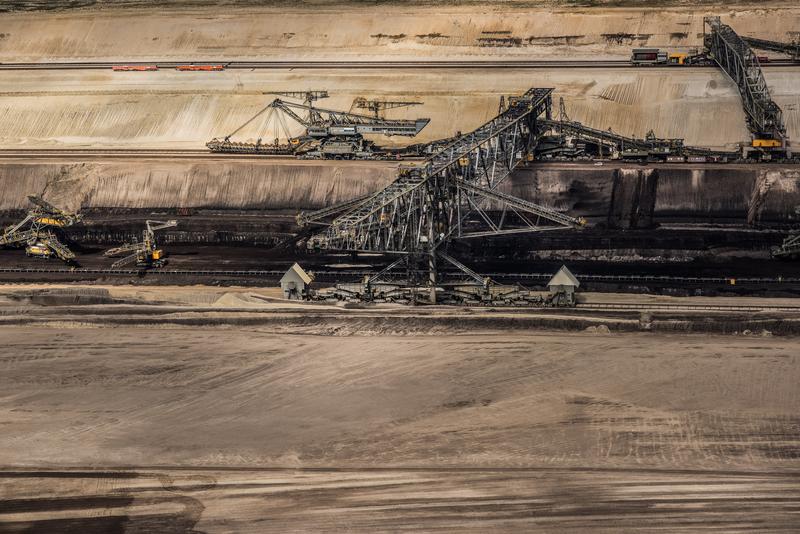Q&A: Large combustion plants ‘BREF’ standards

There are some environmental regulations currently under discussion that could change the face of Europe’s energy system and air quality, though hardly anyone knows they exist.
I’m talking about the large combustion plant (LCP) BREF – which is a rough acronym for ‘Best available technique’ REFerence document. This is a document – a draft so far – that sets out different environmental performance standards for big industrial plants including coal and lignite plants. What form it takes could decide the future of Europe’s most polluting coal plants.
It addresses the particles that make up air pollution, thermal efficiency, and soil and water pollution with an integrated approach to serving “as a driver towards improved environmental performance across the [European] Union”.
And the updated BREF will be legally binding, for the first time, under theIndustrial Emissions Directive (IED). The rules are expected to kick in in 2020, by which time operators will already have to be compliant. Behind the scenes it’s sparked something of a row.
Why does this matter?
Some say the LCP BREF has the potential to drive a wave of coal plant retirements across Europe by the mid-2020s. But it’s difficult to say this with any certainty.
If it did happen, though, there would be big impacts for air pollution, health and climate change.
The emissions from coal and lignite plants cause air pollution through a complex mixture of dust, sulphur dioxide (SO2) and nitrogen oxides (NOx) and other emissions. It is estimated that coal plants in Europe result in around 22,000 premature deaths a year. Plus, there are the other side-effects, such asrespiratory and heart disease, and lung cancer.
In terms of climate change, burning coal, and especially lignite (brown coal), releases more CO2 into the atmosphere compared to other fossil fuels.
 Mining for lignite in Lausitz, Germany
Mining for lignite in Lausitz, Germany
However, CO2 was removed from the scope of the BREF to allow for the Emissions Trading Scheme – the EU’s strategy for reducing carbon emissions in the bloc – although member states can set energy efficiency requirements.
The threat of new stringent air pollution rules might also discourage investors looking ahead to when the rules come into play from financing new coal and lignite plants.
Why is it so tricky to know what the consequences will be?
There are many reasons. One is that the BREF is still in the process of being discussed. It won’t be set in stone until the early 2016, four years before it’s due to come into force.
Experts involved in the process say an in-depth analysis of the completed BREF standards is needed to fully understand the impacts on coal plants.
This is very complicated, because there are several factors in play. Firstly, there is uncertainty over whether plant operators will invest to retrofit their plants to bring them in line with stricter standards – or throw their metaphorical hands up in the air and decide it is not economically viable to do so.
Secondly, there is flexibility built into the BREF. The standards in the BREF need to be technically and economically viable and take “into consideration the costs and advantages” of the improvements.
This means that the writers of permits for LCP plants in each member state can make exceptions for particular plants on a case-by-case basis arguing the environmental benefits don’t outweigh the costs. However, any such case must be tested before the courts.
You say the LCP BREF is legally-binding? How does that work?
It helps to understand the Industrial Emissions Directive (IED) a little more to get the full picture on this.
For Large Combustion Plants the IED will come into force in 2016. The IED as a whole supercedes seven directives and merges their concepts, including two to do with LCPs: the Industrial Pollution Prevention Control Directive (IPPC) and the Large Combustion Plants Directive (LCPD), which, as its name suggests, applies specifically to large combustion plants.
There are two relevant parts to the IED that carry over concepts from the IPPC and LCPD. The LCPD has hard emissions limit values, which will appear as tightened upper limits of emissions for NOx, SO2 and dust particles in the IED – the so-called ‘Environmental Safety Net’.
The IED also retains the concept of ‘Best Available Techniques’ (BAT) from the IPPC. The standards laid out in the LCP BREF and revised every eight years will be determined by BAT-associated emissions levels (called BAT AELS). These are ranges that will now take precedence over the ‘Safety Net’ levels.
They also, as mentioned previously, cover a broader amount of issues – including mercury, carbon monoxide and thermal efficiency.
“The IED provides for the calculation and setting of ELVs [emissions limit values] in permits. It states that limits must be set so that when operating normally the installation does not emit higher levels of pollutants than are specified in the relevant BAT Conclusions for that type of installation,” according to environment and energy law lawyer Fiona Ross of Pinsent Masons.
In other words, permit writers in the relevant authorities have to fully comply with the LCP BREF by setting ELVs on the basis of BAT AELs (unless they make an exception on the basis of cost).
In effect this means coal and lignite plants in the EU could need to reduce their pollution to levels that are lower than those in the IED – as long as the finalised BAT AELs are stricter in terms of NOx, SO2 and dust.
Is the draft LCP BREF stricter than the old IED?
Yes, because it has a broader, and more integrated, remit than the IED’s limits (in Annex V).
But if you’re looking at air pollutants, it depends what you’re looking at. Some are stricter, which may mean coal plant operators will have to invest in technologies to clean up their emissions – but others allow for emissions at the same level as the legally binding safety net.
Direct comparison is not immediately obvious because the IED ELVs are based on monthly averages whilst the BREF presents BAT AELs as yearly or daily averages. A requirement to comply with ELVs on a monthly basis means that the equivalent yearly average will be the same. Therefore a yearly BAT AEL with an upper limit of 180 mg/Nm3 will be stricter than an ELV of 200 mg/m3.
Also, there is a good chance that the BREF will set mercury standards, which the IED doesn’t at the moment. This would be a significant step towards limiting the toxic metal emissions to air and water, depending on how strict the standards are. Coal is a major source of mercury in Europe.
How are the BREFs for LCPs decided?
It’s thrashed out between representatives of EU member states, industry, NGOs and the European Commission. They make up the Technical Working Group (TWG) in charge of developing the new guidance.
The European Commission’s DG Environment and Joint Research Centre (JRC)’s European Pollution Prevention and Control Bureau co-ordinate the process. They also check the technical data and take a lead on what should be the BREF.
The process started way back in 2011. In July 2013 a draft updated BREF document was published, followed by a consultation which ended in September that year.
We’re currently in the stage of a series of TWG discussions, which should result in conclusions on how to amend the draft at the group’s final meeting in mid-2015. There’s also one TWG sub-group on energy efficiency feeding into the information exchange process.
The whole shebang culminates in a proposal by the European Commission, which is subject to a vote of the committee members, made up of member states (called a comitology vote) in by the end of 2015.
The resulting rules are due to come into force in early 2020, four years after they are expected to be published.
In case you’re interested this kind of rule-making is called the “Sevilla Process” because the JRC is based in Seville.
Surely industry isn’t too happy about tougher environmental standards?
Christian Schaible, a policy officer for the EEB (European Environmental Bureau), who has an insider view of the process, says industry wants to lower the ambition levels of the LCP BREF.
This may not be surprising. The updated version of the rules will significantly tighten up controls for sulphur dioxide (SO2) and nitrogen oxides (NOx) particles that contribute to air pollution.
The NOx parameter in particular is facing opposition, especially from the lignite and hard coal industry because it could end up costing the plant operators dearly to retrofit abatement techniques – such as SCR (Selective Catalytic Reduction) or SNCR (Selective Non-Catalytic Reduction, SNR’s cheaper cousin). It’s debated whether the hard coal industry would need to use SNR or SNCR to meet the standards.
Also, making lignite pre-drying mandatory in order to increase plant efficiency – but possibly resulting in expensive boiler modifications – is a major concern for the lignite industry, along with tightening SO2 emissions levels.
Both lignite and hard coal plants could have to address the quantity of dust particles they put out.
The new standards on mercury could also mean additional mercury specific abatements or upgrades in dust controls (since dust particles emitted from LCPs can contain the toxic metal, which is associated with damage to the lungs, kidneys and brain).
How are these concerns playing out in the process?
The process of deciding the LCP BREFs is dominated by industry and only one environmental NGO is taking part.
Recent reports suggest that utilities and particular countries that are highly dependent on coal for their power – such as Germany, Poland, the UK, Bulgaria, Greece and Czech Republic – are lobbying to weaken the draft performance standards. They are mainly using arguments around cost or technical arguments.
For instance, as ENDS Europe reported, the Czech Republic has warned that the draft BREF could have a severe economic impact on some countries, with particular concern over the BAT associated emission levels for SOx on lignite-fired power plants – which it wants to be more lenient.
The Polish energy lobby group has also recently voiced its strong concerns that LCP BREF will cost the Polish power sector almost €5bn in updates to its aging coal-burning fleet – with NOx and SO2 the main disputed areas.

